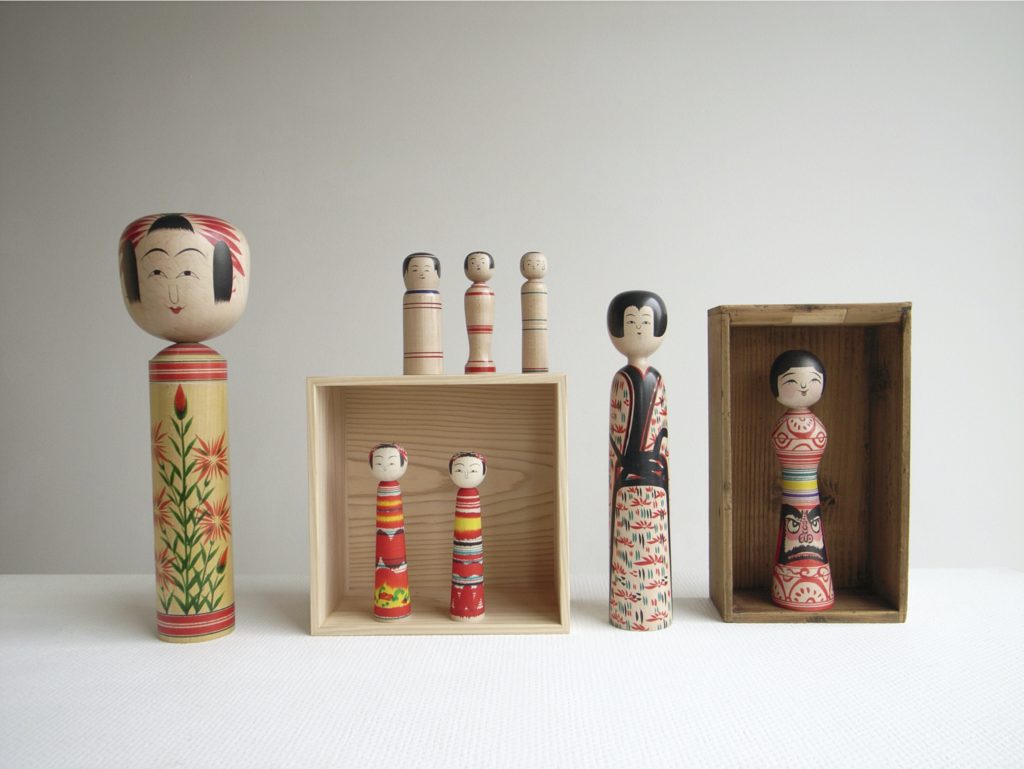Look carefully. The eyes, the hairstyle, and the shape and design of the body—each wooden doll is completely unique. Each wears a distinct, adorable facial expression. And each was carved and crafted in the Tohoku region of northeastern Japan. These are traditional kokeshi.
I first “discovered” kokeshi during a trip to Fukushima Prefecture on a magazine assignment. On the way to the Aizu area, I stopped by Dake Onsen to visit the studio of a local kokeshi-kojin (this is the name for woodworkers who craft kokeshi dolls). Truth be told, up to then my image of kokeshi was negative and biased. Eerie, dreary, and uncool. If you’ve seen one, you’ve seen them all.
So I was astonished at the rows of kokeshi lining the studio. They looked gentle, delicate, and even modern—nothing like my image of the wooden dolls up to then. Once my interest was piqued, I did some studying and became enchanted with the large number of varieties and intriguing designs and expressions.
The first kokeshi dolls were produced in the later premodern Edo period (1603–1868) as souvenirs for visitors to Tohoku’s onsen resorts. Soaking in a hot spring spa was one of the few forms of recreation at a time when the majority of Japanese people were farmers. The adults recuperated and re-energized in the healing waters, and bought kokeshi dolls as gifts for their children and grandchildren.
Traditional kokeshi enjoyed a wave of popularity around the Taisho period (1912–26), when people of good taste began compiling personal collections. In time, kokeshi transformed from a children’s toy to an adults’ object of admiration. Following several boom and bust cycles, kokeshi saw a final peak in the Showa 40s (1965–1975) and entered a period of decline thereafter.
Today, kokeshi dolls are making a quiet comeback, especially among young women. The growing interest in handicrafts and traditional crafts in general seems to be inspiring more people to wake up to the fine design and kawaii quality of kokeshi. Now is a good time. I invite you to put your prejudices aside and look at kokeshi with an open mind. I promise you will appreciate their charms that you never knew before.
<PAPERSKY no.36 (2011)>

Takeo Okuma
Takeo Okuma handled PR and product planning at the interior shop Idée before taking up his present role as director of CLASKA / DO.











